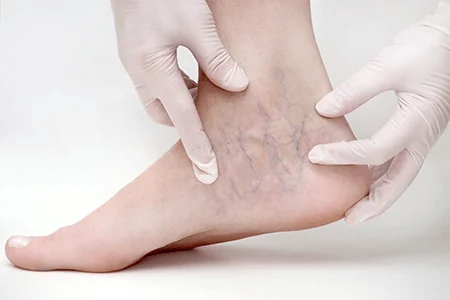Podiatry plays a role in wound care, particularly for the lower extremities. Wounds affecting the feet, ankles, and lower legs can be particularly challenging to heal due to reduced blood flow, underlying health conditions, or improper pressure distribution. Explore three common wound types in podiatry, their management approaches, and the impact of advanced wound care techniques.
Surgical Wounds
Surgical wounds are incisions or excisions resulting from podiatric or other surgical procedures. Proper care can be beneficial in preventing infection and promoting healing. Some ways to manage surgical wounds are:
- Sterile Practices: Maintaining a sterile environment during post-operative wound care helps reduce the risk of infection. This includes proper cleaning and dressing changes.
- Monitoring for Complications: Regular assessments for redness, swelling, or discharge help detect early signs of infection, allowing for timely intervention.
- Enhanced Closure Techniques: Many podiatric specialists utilize advanced closure methods and materials to improve healing. Techniques like negative pressure wound therapy or flap reconstructions are often employed for challenging cases.
- Follow-Up Care: Scheduling follow-up appointments helps make sure that healing progresses appropriately and provides an opportunity to adjust treatment plans as needed.
Diabetic Ulcers
Diabetic ulcers are open sores or wounds that commonly occur on the feet of individuals with diabetes. They are the result of high blood sugar levels, which damage nerves and blood vessels, impairing the body’s ability to heal injuries. You can manage diabetic ulcers by:
- Blood Sugar Control: Consistently maintaining healthy blood sugar levels is foundational for reducing the risk of ulcer development and improving wound healing outcomes.
- Scheduled Foot Exams: Regular foot examinations are critical for identifying early signs of ulcers or complications. Checking for redness, swelling, or minor trauma helps prevent these symptoms from escalating.
- Offloading Techniques: Specialized offloading methods such as custom orthotic devices, casts, or therapeutic footwear help redistribute pressure away from the ulcer site, promoting healing.
- Advanced Wound Care Solutions: Treatments often include topical dressings, antimicrobial agents, and therapies such as debridement, which removes dead tissue to encourage faster healing.
Pressure Sores
Pressure sores, or decubitus ulcers, occur when prolonged pressure cuts off blood flow to the skin. They often affect patients who are bedridden or have limited mobility. If untreated, these sores can cause significant discomfort and complications.
To prevent pressure sores, several strategies can be implemented. Pressure distribution techniques, such as using specialized cushions, mattresses, and support surfaces, help reduce pressure on vulnerable areas. Frequent repositioning of immobile patients helps encourage circulation and minimize the buildup of pressure. Maintaining skin integrity through proper hydration, nutritional support, and protective dressings is beneficial in preventing tissue damage and promoting overall skin health.
Advancing Wound Care
Wound care within podiatry combines expertise, technology, and patient-centered approaches to aid in successful outcomes. By addressing diabetic ulcers, pressure sores, and surgical wounds with tailored strategies, podiatrists deliver specialized care. This care prevents complications and accelerates recovery. Regular follow-ups and advanced treatments play a role in promoting long-term healing. They also improve patients’ quality of life.
Seek Expert Care Today
If you are dealing with a non-healing wound or have concerns about your foot health, expert care is beneficial. Chronic wounds can lead to complications if not treated properly, and early intervention is key to promoting healing and preventing further issues. Advanced wound care solutions tailored to your specific needs can help you receive the highest level of care to help you get back on your feet.


Leave a Reply